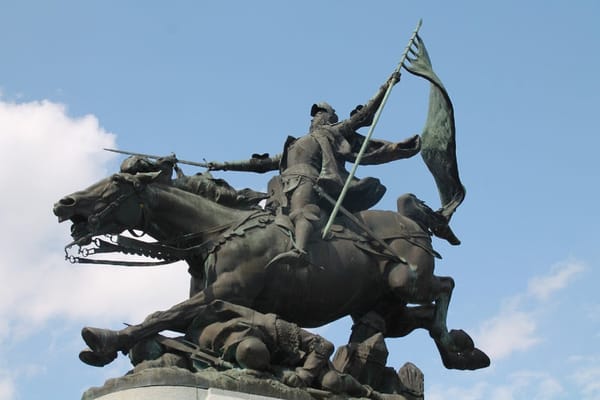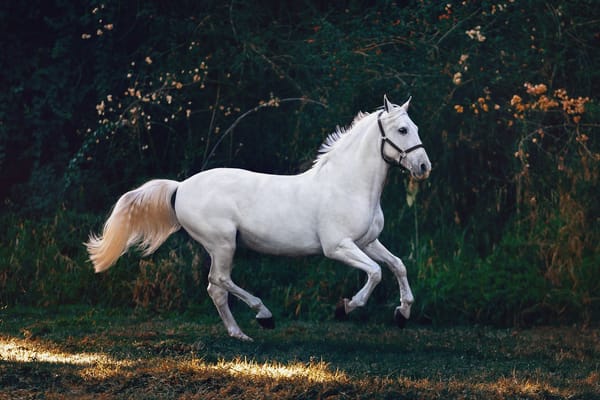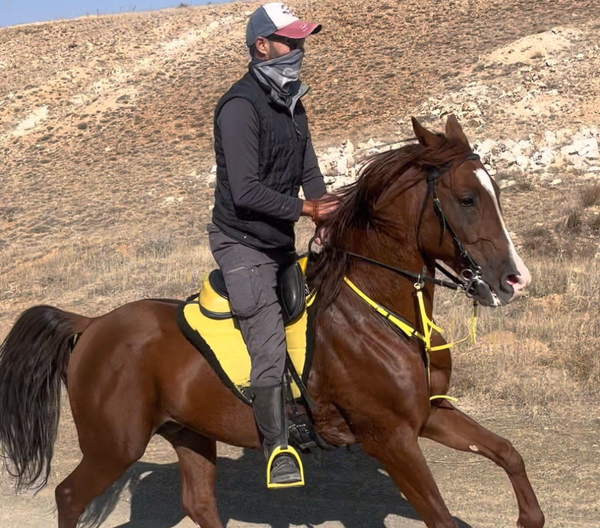The Beauty of Horse Colors: A Journey Through Equine Hues, Names, and Classifications
Are You Truly Ready to Put Your Mobile or Web App to the Test?
Don`t just assume your app works—ensure it`s flawless, secure, and user-friendly with expert testing. 🚀
Why Third-Party Testing is Essential for Your Application and Website?We are ready to test, evaluate and report your app, ERP system, or customer/ patients workflow
With a detailed report about all findings
Contact us nowTable of Content
Horses have always captivated humanity with their grace, power, and beauty. Whether seen galloping through wide open fields, competing in events, or simply being admired for their elegance, horses come in a variety of colors and patterns that make them as unique as the individuals who care for them.
Understanding these colors, their names, and classifications can not only deepen one’s appreciation for these magnificent animals but also help horse enthusiasts identify and describe them more accurately.
The Basics of Horse Coat Colors
A horse’s coat color refers to the shade of its fur, and it is determined by genetics, the specific combination of genes inherited from its parents. While some coat colors are rare and striking, others are more common and easily recognizable.
In this article, we will dive into the most common horse colors, explain their genetic origins, and classify them into categories based on appearance. We’ll also explore some traditional names for these colors and the fascinating world of equine coat patterns.
1. Bay
Bay is one of the most common and widely recognized horse coat colors. A bay horse has a reddish-brown body with a black mane, tail, and lower legs. The exact shade of bay can vary, ranging from a light, reddish tan to a deep mahogany. Bay horses are often considered classic and elegant, and their coat color is highly prized in many horse disciplines, including racing.
Genetics: The bay color is produced by the extension (E) gene combined with the agouti (A) gene, which restricts black pigment to the horse's mane, tail, and lower legs.
Other Names: While bay is the standard term, variations such as light bay or dark bay refer to the subtle differences in their overall reddish hue.
2. Chestnut
Chestnut is a striking, reddish-brown color without black points (mane, tail, and lower legs). The horse's coat can range from a light, coppery red to a rich, deep red or dark brown. One of the defining features of chestnuts is that they have a coat color that is a single solid hue, unlike bays, which have the darker black points.
Genetics: Chestnuts are produced by the recessive chestnut gene (e). Unlike bays, there is no agouti gene to restrict the distribution of black pigment.
Other Names: Chestnuts may also be referred to by their specific shades such as liver chestnut (dark brownish-red) or light chestnut (paler red).
3. Black
A true black horse has a pure black coat, which is deep and uniform, with no visible brown or lighter markings on the coat. The mane and tail of black horses are also black, and they often have a glossy, jet-black sheen when properly cared for.
Genetics: The black coat color is produced by the dominant extension (E) gene without the agouti gene, which means the black pigment is distributed across the entire body, including the mane and tail.
Other Names: Occasionally, people might refer to a horse as "black-brown" if the horse has a black coat with brownish undertones, though this is not truly considered a pure black coat.
4. Gray
Gray horses are born with a solid color, often a reddish or brown shade, but gradually lighten as they age, eventually becoming pure white. Grays can be very light or dark, and their coat can take on a variety of shades as they mature. A gray horse might have flecks of white or darker gray patches as it ages.
Genetics: The gray color is caused by a dominant gene (G) that causes the horse's coat to lighten over time. Gray horses are unique in that they do not "stay" gray—they will continue to lighten as they grow older.
Other Names: Gray horses are often described as dapple gray (if they have lighter patches), steel gray (a darker, more uniform gray), or flea-bitten gray (small brown spots appear on their coat).
5. Palomino
Palomino horses are known for their golden, buttery coat that closely resembles the color of a golden horse, paired with a light blonde or white mane and tail. They are often seen as one of the most beautiful horses because of their stunning, shiny coat.
Genetics: The palomino color is a dilution of the chestnut color, produced by a cream gene acting on a chestnut base. The cream gene dilutes the red pigment of the chestnut coat into a lighter, golden hue.
Other Names: Light palomino refers to palominos with a very light golden coat, while dark palomino has a deeper, almost coppery golden shade.
6. Appaloosa
Appaloosa is not just a color but a pattern, often characterized by spots or mottled patterns across the coat. These horses are known for their distinctive and unique patterns, which can vary widely, but the common theme is a base color (such as bay, chestnut, or black) combined with spots or speckles.
Genetics: The Appaloosa coat pattern is caused by the presence of the "Appaloosa" gene, which can produce a variety of color patterns. This gene is dominant, so the pattern appears in a wide range of horses.
Other Names: Common Appaloosa patterns include the leopard (a white coat with dark spots) and blanket (a white patch over the hindquarters with darker spots).
7. Buckskin
Buckskin horses have a coat color that is similar to palomino but with a more yellow or tan appearance. They often have black points on their legs, mane, and tail. The buckskin color is often described as a rich, golden tan.
Genetics: Like palomino, the buckskin color is produced by the cream gene diluting a bay coat. However, instead of creating a yellowish tone, it results in a tan coat with darker points.
Other Names: Buckskin horses are sometimes described as dun (though dun refers to a different gene), or smoky buckskin, which can have a darker coat.
8. Dun
Dun horses are typically characterized by a light yellow or golden coat, with darker points on their legs, mane, and tail. Duns often feature a distinctive dorsal stripe, which runs down their back, and sometimes they also have leg barring (horizontal stripes on the legs).
Genetics: The dun color is caused by a dilution gene, the Dun gene (D). This gene lightens the horse’s body while leaving the darker points and markings intact.
Other Names: Common subtypes of dun horses include red dun (a reddish version of the typical yellowish dun), grulla (a smoky, grayish-blue dun), and zebra dun (with dark stripes on the legs).
Unique and Unusual Colors
While bay, black, and chestnut are some of the most common horse colors, there are other, more rare hues and classifications that horse owners and breeders may encounter. Some of the most fascinating and less common colors include:
- Silver: Silver horses have a coat color similar to gray, but their coats have a shimmering, silver-like appearance due to a specific genetic mutation. This color is most common in certain breeds such as the Missouri Fox Trotter.
- Cremello: A very pale, almost white color, similar to a pale palomino. Cremellos have a cream-colored coat with a white mane and tail. This color results from two cream genes acting on a chestnut base.
- Isabella: A rare color found in some horses with a pale, creamy yellowish coat, sometimes resembling a buckskin, but distinct in appearance.
The Art of Naming Horses
Naming horses can be just as personal and creative as naming a pet or child. Traditionally, horses in competition or racing are given names that reflect their pedigree, character, or traits. Some names may be inspired by the horse's color or coat pattern, while others might be based on the horse's lineage, accomplishments, or distinctive behaviors.
For example:
- A chestnut horse may be named "Autumn Blaze" to reflect its fiery red coat.
- A palomino could be called "Golden Sun" for its bright golden color.
- A horse with a distinctive Appaloosa coat might be named "Freckle Face" or "Spotted Wonder" to match its unique appearance.
Conclusion
The world of horse colors is not just about aesthetics, but about understanding the rich genetic makeup behind these majestic animals. From the classic elegance of a bay to the golden beauty of a palomino, each horse’s coat tells a story of genetics, heritage, and beauty. For breeders, trainers, and horse enthusiasts, understanding horse colors, names, and classifications enhances not only their appreciation of these stunning creatures but also deepens the connection between horse and handler.
No matter what color a horse may be, one thing is certain: their beauty, grace, and strength are undeniable. Whether you are a seasoned equestrian or simply a lover of horses, the range of colors and patterns will continue to fascinate and captivate all who encounter them.





![The Hidden Crisis in Horse Care: Your horse is NOT a ***** Motorcycle [offtopic]](https://images.unsplash.com/photo-1511195188569-9b97074ae1b1?crop=entropy&cs=tinysrgb&fit=max&fm=jpg&ixid=M3wxMTc3M3wwfDF8c2VhcmNofDV8fGhvcnNlfGVufDB8fHx8MTcyODY1NTY1NHww&ixlib=rb-4.0.3&q=80&w=600)




